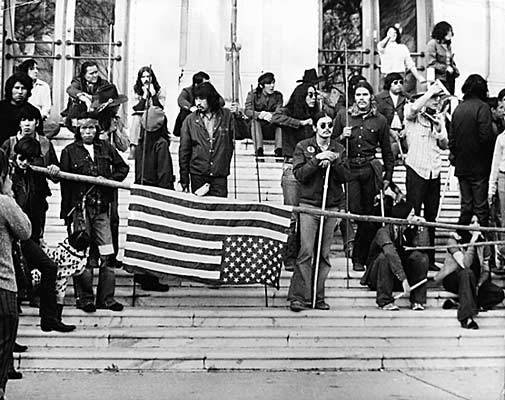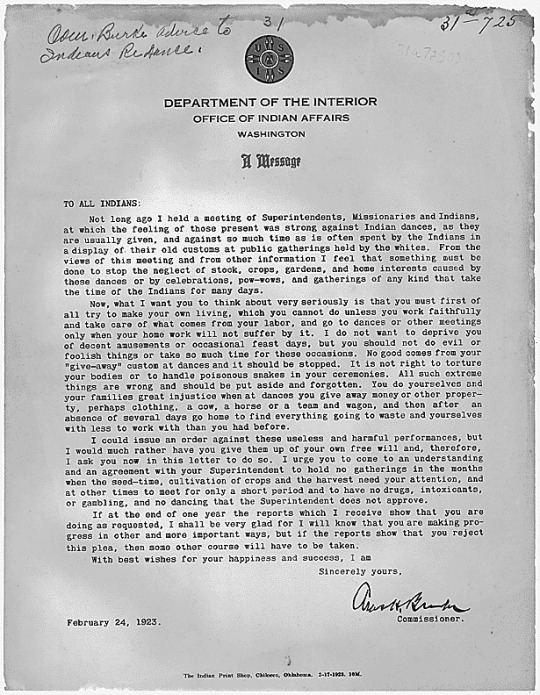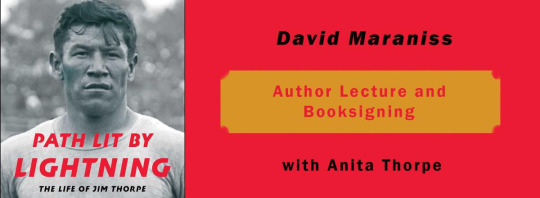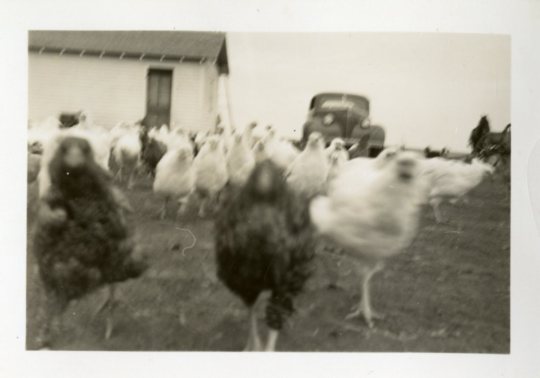#bureau of indian affairs
Text
This is a big deal. No, $48,692.05 is in no way, shape or form a fair price for the many thousands of acres of traditional Chinook land that were never ceded but were taken by settlers anyway. However, the fact that this funding from the 1970 Indian Claims Commission settlement is being released to the tribe is the strongest move toward regaining recognition in years.
As a bit of background, the Chinook Indian Nation are some of the descendants of many indigenous communities who have lived in the Columbia-Pacific region and along the Columbia to the modern-day Dalles since time immemorial. They saw the arrival of the Lewis & Clark party to the Pacific Ocean in 1805, but shortly thereafter were devastated by waves of diseases like malaria and smallpox. The survivors signed a treaty to give up most of their land in 1851, but it was never ratified by the United States government. While some Chinookan people are currently part of federally recognized tribes such as the Yakama Nation, the Confederated Tribes of the Warm Springs Reservation, and the Confederated Tribes of the Grand Ronde Reservation, the Chinook Indian Nation--comprised of the Lower Chinook, Clatsop, Cathlamet, Willapa, and Wahkiakum--have remained largely unrecognized.
That changed briefly in 2001. On January 3 of that year, the Department of the Interior under the Clinton administration formally recognized the Chinook Indian Nation. In July 2002, the Bush administration revoked the federal recognition after complaints from the Quinault Indian Nation, as the Chinook would have had access to certain areas of what is now the Quinault reservation. This meant that the Chinook, once again, were denied funding and other resources given to federally recognized tribes, to include crucial healthcare funding during the COVID-19 pandemic.
The Chinook Indian Nation has been fighting legal battles to regain federal recognition ever since the revocation. The funding released to them in this month's court decision doesn't make them federally recognized, but it is a show of legitimacy in a tangled, opaque system that indigenous people across the United States have had to contend with for many decades. Here's hoping this is a crack in the wall keeping the Chinook from recognition, and that they get more good news soon.
#Chinook Indian Nation#Chinook#Chinookan people#indigenous people#indigenous Americans#indigenous rights#landback#federal recognition#Bureau of Indian Affairs#Native American#Native American rights#civil rights#United States
323 notes
·
View notes
Text
Have you heard of the American Indian Movement? Did you know natives had a movement/group in the 70's-80's dedicated to native liberation?
No? It's a part of history they don't teach you in school, but come close and look so I can show you.
Watch this, it's not long I promise. This is Russel Means, a prominent native activists and one of the leaders of AIM. AIM sought to help natives with things like tribal sovereignty, housing, healthcare, and food security.
Here he is testifying to the US government.
youtube
The transcript ^
A little excerpt of the end:
"The American Indian people’s right to self-determination is recognized and will be implemented through the following policies:
The American Indian individual shall have the right to choose his or her citizenship and the American Indian nations have the right to choose their level of citizenship and autonomy up to absolute independence;
The American Indian will have their just property rights restored which include rights of easement, access, hunting, fishing, prayer, and water;
The BIA will be abolished with the American Indian tribal members deciding the extent and nature of their governments, if any;
Negotiations will be undertaken to exchange otherwise unclaimed and un-owned federal property for any and all government obligations to the American Indian nations, and to fully -- and to hold fully liable those responsible for any and all damages which have resulted from the resource development on or near our reservation lands including the -- including damages done by careless and inexcusable disposal of uranium mill tailings and other mineral and toxic wastes.
I want to thank you, gentlemen, for inviting me here. It's been a high honor, especially since I'm the only one invited here today to testify that doesn't receive money from the federal government. Also, I want to make -- I was introduced as a former founder and leader of American Indian movement to the tribal chairwoman that you have here, a former associates for the American Indian Movement back in the days when we were gross militants and so I just wanted to let you in on that, that the American Indian Movement is a very proud continuing part of American Indian Society.
Thank you."




"The American Indian Movement remains based in Minneapolis with several branches nationwide. The organization prides itself on fighting for the rights of Native peoples outlined in treaties and helping to preserve indigenous traditions and spiritual practices. The organization also has fought for the interests of aboriginal peoples in Canada, Latin America and worldwide. “At the heart of AIM is deep spirituality and a belief in the connectedness of all Indian people,” the group states on its website."
#AIM#American indian movement#usa#politics#native sovereignty#tribal sovereignty#native rights#treaty rights#human rights#russel means#dennis banks#leonard peltier#native america#native#indigenous#ndn#BIA#bureau of indian affairs#colonialism#settler#settler colonialism#usamerican#liberals#progressives#leftist#ogala lakota#native pride#american history#native history#lakota history
266 notes
·
View notes
Text

“I could issue an order against these useless and harmful performances [dances, powwows, and other gatherings], but I would much rather have you give them up of your own free will . . . “
From the Commissioner of Indian Affairs, February 24, 1923.
Record Group 75: Records of the Bureau of Indian Affairs
Series: Subject Numeric Correspondence Files
Transcription:
Com. Burke advice to Indians Re Dance.
31-725
Department of the Interior
Office of Indian Affairs
Washington
A Message
TO ALL INDIANS:
Not long ago I held a meeting of Superintendents, Missionaries and Indians, at which the feeling of those present was strong against Indian dances, as they are usually given, and against so much time as is often spent by the Indians in a display of their old customs at public gatherings held by the whites. From the views of this meeting and from other information I feel that something must be done to stop the neglect of stock, crops, gardens, and home interests caused by these dances or by celebrations, pow-wows, and gatherings of any kind that take the time of the Indians for many days.
Now, what I want you to think about very seriously is that you must first of all try to make your own living, which you cannot do unless you work faithfully and take care of what comes from your labor, and go to dances or other meetings only when your home work will not suffer by it. I do not want to deprive you of decent amusements or occasional feast days, but you should not do evil or foolish things or take so much time for these occasions. No good comes from your "give-away" custom at dances and it should be stopped. It is not right to torture your bodies or to handle poisonous snakes in your ceremonies. All such extreme things are wrong and should be put aside and forgotten. You do yourselves and your families great injustice when at dances you give away money or other property, perhaps clothing, a cow, a horse or a team and wagon, and then after an absence of several days go home to find everything going to waste and yourselves with less to work with than you had before.
I could issue an order against these useless and harmful performances, but I would much rather have you give them up of your own free will and, therefore, I ask you now in this letter to do so. I urge you to come to an understanding and an agreement with your Superintendent to hold no gatherings in the months when the seed-time, cultivation of crops and the harvest need your attention, and at other times to meet for only a short period and to have no drugs, intoxicants, or gambling, and no dancing that the Superintendent does no approve.
If at the end of one year the reports which I receive show that you are doing as requested, I shall be very glad for I will know that you are making progress in other and more important ways, but if the reports show that you reject this plea, then some other course will have to be taken.
Wish best wishes for your happiness and success, I am
Sincerely yours,
[Signature]
Commissioner.
February 24, 1923.
The Indian Print Shop, [Chilberc?] Oklahoma 2-17-1923. [10M?]
#archivesgov#February 24#1923#1920s#Native American history#American Indian history#Indigenous American history#dance#powwow#Bureau of Indian Affairs
57 notes
·
View notes
Text

Native American Heritage Month
We honor Native American Heritage Month by highlighting our vast holdings that document the history and recognize the many achievements and contributions of Native Americans from as early as 1774. These include every treaty signed with Native Americans, available online through the National Archives Catalog, records from the Bureau of Indian Affairs and Indian Schools, and Indian Census Rolls.
Path Lit by Lightning: The Life of Jim Thorpe
Join us in person or online on December 1, 2022, at 7 PM ET.
National Archives Museum in Washington, DC.
Register online; View on YouTube

Jim Thorpe, a member of the Sac and Fox Nation, rose to world fame as a mythic talent who excelled at every sport. He won gold medals in the decathlon and pentathlon at the 1912 Stockholm Olympics, was an All American football player at the Carlisle Indian School, the star of the first class of the Pro Football Hall of Fame, and played in the MLB for the New York Giants. David Maraniss’s book, Path Lit by Lightning, tells Thorpe’s story. Anita Thorpe, Jim Thorpe's granddaughter, will attend the program.
Related NARA exhibit: All American: The Power of Sports
National Archives Museum, Washington DC, through January 7, 2024.

Anita Thorpe, left, granddaughter of 1912 Olympic champion Jim Thorpe, poses with National Archives curator Alice Kamps in front of a display honoring Thorpe’s grandfather in the “All American: The Power of Sports," 9/12/2022. Photo for the National Archives by John Valceanu.
Related Smithsonian exhibit:
Why We Serve: Native Americans in the U.S. Armed ForcesThe National Museum of the American Indian through November 30, 2023
Why We Serve honors the generations of Native Americans who have served in the armed forces of the United States—often in extraordinary numbers—since the American Revolution.
Online Resources:
Native American History special topics page of NARA’s related online resources.
Bureau of Indian Affairs Photos (more than 18,000) Now Online.
The Story of the 1950 Census P8 Indian Reservation Schedule - learn about Native Americans in the 1950 Census.
#native american#nmai#indigenous#native american heritage month#indigenous history#jim thorpe#path lit by lightning#david maraniss#indian schools#bureau of indian affairs#nfl#mlb#sports history#athletes
93 notes
·
View notes
Text
𝕣𝕖𝕤𝕖𝕒𝕣𝕔𝕙 𝕡𝕣𝕠𝕛𝕖𝕔𝕥: 𝕓𝕦𝕣𝕖𝕒𝕦 𝕠𝕗 𝕚𝕟𝕕𝕚𝕒𝕟 𝕒𝕗𝕗𝕒𝕚𝕣𝕤

When the factory fur trade of North America was abolished in 1822, the US Government was left searching for a way to maintain control in Indian territories. John C. Calhoun, then Secretary of War, created the “Bureau of Indian Affairs (BIA)” on March 11, 1824. He did so without authorization from Congress, which is against the general practice although not expressly forbidden by the Constitution. John Calhoun would go on to become the Vice President of the United States the following year.
1825 was an interesting year in US history, representing the end of the Era of Good Feelings that followed the War of 1812. The presidential election would split the previous first party system into the Democrat and Republican system we now know today. The country was taking its first steps to limit the expansion of slavery into its newly aquired territories. As Jacksonian Democracy extended the privilege of voting to most white men aged 21 or older, removing the previous requirement to own land, racist and colonial mentalities spread in the form of “manifest destiny”. The US needed to remove Indian peoples from their homelands and they needed a way to do it.
The Bureau of Indian Affairs would go on to forcibly remove native peoples from their nations under the direction of Senator and then Secretary of State, John C. Calhoun. In the late 1800’s, after succeeding in removing many tribal nations from their homelands, the Bureau of Indian Affairs created the Residential Schooling system to assimilate Indian children into American culture. Missionaries had already established the practice, but the Bureau of Indian affairs built their schools specifically off-reservation and incorporated “students” from a variety of different tribes to aid in their goal of assimilation. Their model was the infamous Carlisle Indian Industrial School in Pennsylvania.
The 1960’s and 1970’s saw a rise in activism for and among American Indians. The Bureau faced a number of displays of public opposition by Indian people and those who supported them, like the 1972 Occupation of BIA Headquarters. Today, the Bureau of Indian Affairs is responsible for quite a few different things, all concerning the affairs of American Indian people on Tribal lands.
The Bureau as a whole is responsible for the federal recognition of tribes, most recently the Little Shell Tribe of Montana. The Office of Field Operations is responsible for regional operations, working with tribal governments on the management of natural resources, agriculture, fish and wildlife, and parks. The Office of Justice Services operates several programs and also provides funding for law enforcement, tribal courts, and detention facilities on federal lands. Their jurisdiction is surprisingly expansive, holding authority over all crimes committed on reservations and all federal crimes, as well as all crimes committed within “dependent Indian communities” or on trust lands. It is also the responsibility of the OJS to enforce tribal criminal codes and assist tribes in maintaining their courts and justice systems. They also operate the Indian Police Academy, where agents are trained to work specifically in Indian Country. The Office of Trust Services is responsible for overseeing land and resources that are recognized as tribal but owned in trust by the US federal government. Finally, the Office of Indian Services comprises a wide range of different programs, including social services and child welfare, transportation infrastructure, awarding federal funds to tribes, and providing resources to tribal governments. It is generally in their mission statement and enumerated responsibilities to uphold tribal sovereignty under the Indian Self Determination and Education Assistance Act.
Sources: x.x.x.
#history#anthropology#native american studies#bureau of indian affairs#natives in academia#native history#indigenous#studyblr#natives on tumblr#indigenous people#native americans#land back#american history#john c calhoun
76 notes
·
View notes
Text

Farming (Chickens)
Record Group 75: Records of the Bureau of Indian Affairs
Series: Photographs
National Archives Catalog
3 notes
·
View notes
Text
Native American Reservations, Explained.
youtube
I and all my neighbors here in western Hamilton County, Ohio, live on land taken from the Shawnee.
#Youtube#american indian#native american#first nations#treaties#indian#indian reservation#indian reservations#bureau of indian affairs
0 notes
Video
youtube
Does the Bureau of Indian Affairs (BIA) hope to help or hinder the growt...
#youtube#Does the Bureau of Indian Affairs (BIA) hope to help or hinder the growth of indigenous people? I beg to argue their goals do not meet their
0 notes
Text
#Australia#migrant intake#tougher tests#Indian students#population increase#Australian Bureau of Statistics#migration strategy#English-language test#genuine students#skills shortages#overseas students#second course#second student visa#immigration policy#Pramod Thomas#Clare O’Neil#home affairs minister#Parliament House#Canberra#jobs and skills summit#Martin Ollman#Getty Images#immigration news#Australian government#international students#student visa#English proficiency#skills assessment#immigration reforms#Australian demographics
0 notes
Text
Up to 10 informants managed by the FBI were embedded in anti-pipeline resistance camps near the Standing Rock Sioux Indian Reservation at the height of mass protests against the Dakota Access pipeline in 2016. The new details about federal law enforcement surveillance of an Indigenous environmental movement were released as part of a legal fight between North Dakota and the federal government over who should pay for policing the pipeline fight. Until now, the existence of only one other federal informant in the camps had been confirmed.
The FBI also regularly sent agents wearing civilian clothing into the camps, one former agent told Grist in an interview. Meanwhile, the Bureau of Indian Affairs, or BIA, operated undercover narcotics officers out of the reservation’s Prairie Knights Casino, where many pipeline opponents rented rooms, according to one of the depositions.
The operations were part of a wider surveillance strategy that included drones, social media monitoring, and radio eavesdropping by an array of state, local, and federal agencies, according to attorneys’ interviews with law enforcement.
573 notes
·
View notes
Text

Alberto Vargas - April 1973 Playboy Magazine Vargas Girl Illustration - "So, you're from the Bureau of Indian Affairs?" - American Pin-up Calendar Collection
286 notes
·
View notes
Note
Hey, sorry to ask this of you, but i thought it best to hear what an actual Native American thinks, and not just a bunch of random article writers.
Frustrating story short: Is "American Indians" an okay term, to mean the Indigenous peoples of North America? And is shortening it to "Indians" a bit crude, or also okay?
I was studying Swedish and came upon the word "indianby" (=Indian town), which felt like a really odd term. It doesn't feel right to me to, at least for clarity's sake, use "Indian" out of context like that, since it isn't really clear which "Indians" you mean (country vs. Native Americans)
Of course it would be better to refer to people more specifically than that, like referencing their tribe, and I know that you can't speak for literally all Indigenous people,, but I would still like to hear your views on the umbrella terms that get used, and how they're received on a local level.
Anyways, yeah, sorry to ask this. You are not obligated to answer of course.
A more fun question to end this: What's your favourite Pokémon, and is there a regional type of it that you like best?
ps. i really love all the mlp art you've done, your human Rainbow Dash design is living rent free in my head. just spinning in there like theyre on one of those turntables thats in a microwave.
Oh yeah, so like it’s kinda a grey answer, but for your example yeah I’d say that’s pretty outta date if they’re talking about Native Americans. When it comes to talking about Acts and Laws or names of tribal reservations it is perfectly ok to say Indian as in the “Indian religious rights Act, Indian removal Act, -The Indian Sioux Tribe ie. the name of a reservation- bureau of indian affairs and what not. But most European countries still say Indian or even some slurs (squ*w, red skin,braves) and viewed as ok. It’s not. But this is coming from countries that think it’s fun to larp as plains tribes too. Please use Native American or indigenous people of America if there’s a native person using Indian that’s ok, best case is to just learn the persons tribe and refer to them by their tribe then “Native American.”
Also my favorite Pokémon is celebi and the flabebe line🥰 regional type is definitely alola but Galarian ponyta is so awesome and I love it so much.
83 notes
·
View notes
Photo

Ma-ah-go-quah, wife of John Big Fout (or Big Foot), of the Potawatomi Tribe, on July 16, 1923.
Record Group 75: Records of the Bureau of Indian Affairs
Series: Photographs
Image description: An elderly woman seated in a chair in front of an exterior wall. She is wearing a blouse with a long ruffle around the neck, a floral skirt, and a wide fabric headband. She has a blanket partially pulled over her lap. Her hands are clasped in her lap.
#archivesgov#July 16#1923#1920s#portrait#Native American history#American Indian history#Indigenous American history#Potawatomi
163 notes
·
View notes
Text

Chickens, ca. 1930-1949
Standing Rock Sioux Tribe of North & South Dakota
Record Group 75: Records of the Bureau of Indian Affairs
Series: Photographs
National Archives Catalog
#chickens#sioux#national archives#bureau of indian affairs#standing rock sioux tribe of north & south dakota
4 notes
·
View notes
Text

Happy birthday, Vernon Bellecourt! (October 17, 1931)
A member of the White Earth Band of Ojibwe, Vernon Bellecourt became involved with the American Indian Movement, which his younger brother Clyde helped to found in 1968. He quickly became a leader in the movement, participating in the Trail of Broken Treaties caravan to Washington DC, and served as a negotiator for AIM during its subsequent occupation of the Bureau of Indian Affairs. Bellecourt served as an international emmisary for AIM, meeting with a number of anti-imperialist world leaders such as Daniel Ortega and Hugo Chavez. Soon after this latter meeting, he fell ill and died at the age of 75.
139 notes
·
View notes
Text
SARAH WINNENUCCA // WRITER
“She was a Northern Paiute writer, activist (lecturer) and educator (school organizer). At 27, Sarah began working in the Bureau of Indian Affairs at Fort McDermitt in 1871 as an interpreter. Subsequently, Winnemucca became an advocate for the rights of Native Americans, traveling across the U.S. to tell Anglo- Americans about the plight of her people. When the Paiute were interned in a concentration camp at Yakima, Washington after the Bannock War, she traveled to Washington, D.C. to lobby Congress and the executive branch for their release. She also served U.S. forces as a messenger, interpreter, and guide, and as a teacher for imprisoned Native Americans. Winnemucca published Life Among the Piutes: Their Wrongs and Claims (1883), a book that is both a memoir and history of her people during their first 40 years of contact with European Americans. It is considered the "first known autobiography written by a Native American woman."”


14 notes
·
View notes